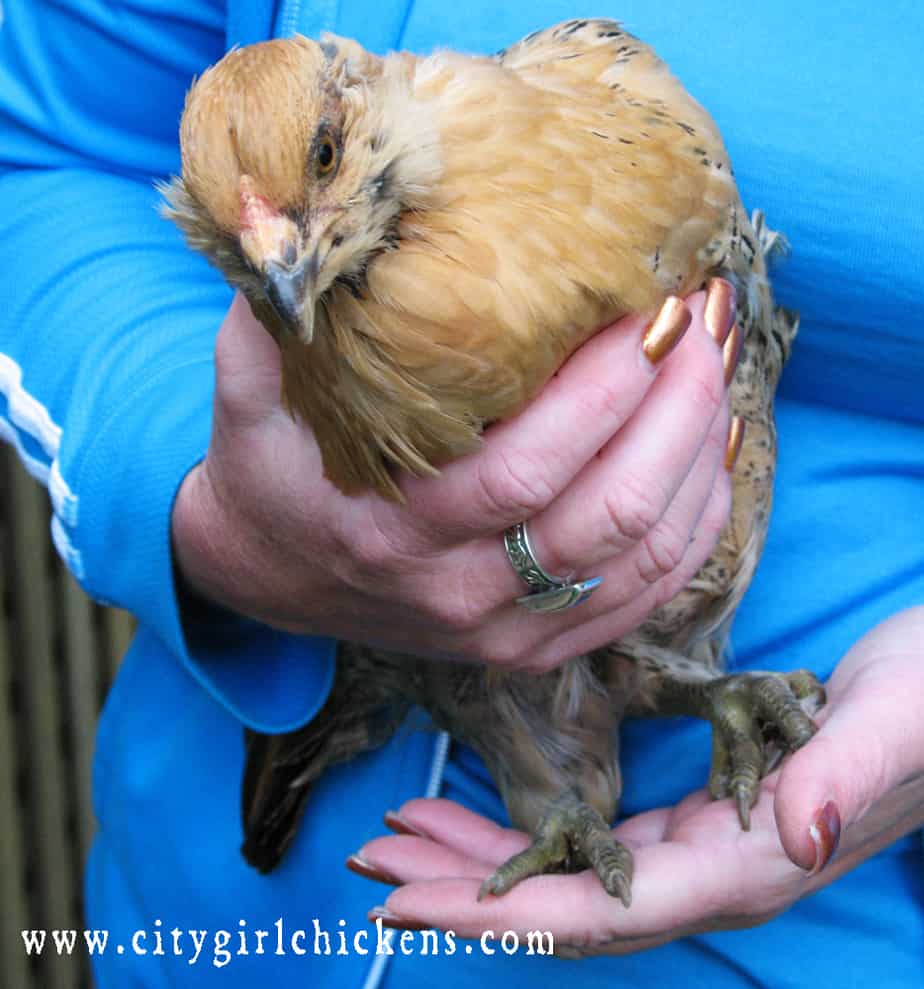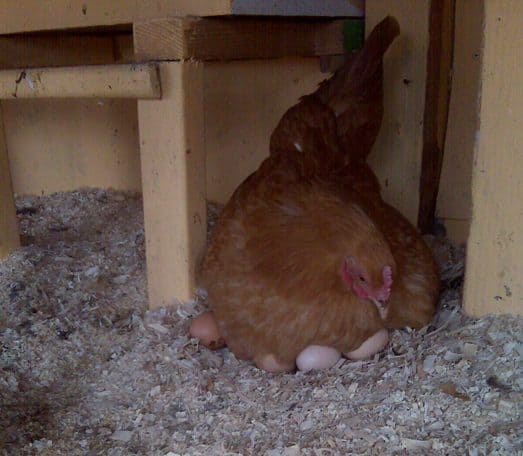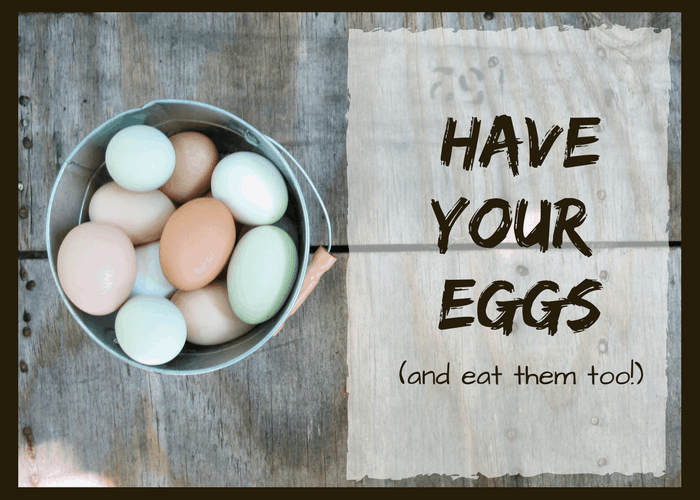It seems like it should be simple enough business to know how to tell if your chickens are laying (you get eggs), but its harder to know which chickens are laying in your flock. Maybe you have new girls that are reaching their point of lay (POL), but you’re not sure if they’ve started yet. Or old girls that might not be laying at all (or seldom) anymore. Are there ways to know which chickens are laying and which aren’t?
Yes! (Sort of). A lot of the clues your hens will give you are just that: CLUES. Those clues can help you make a pretty good educated guess. If you’re not the guessing kind, though, there’s a couple of ways you can know for sure (or mostly sure).

General Conditions:
There are a lot of factors to consider that make a big difference in a hen’s egg laying ability. Here are some overall, general things to look for and think about first.
How is her health?
Does she seem happy and healthy? Is she eating and drinking? Are her feathers shiny and nice? Sick or stressed chickens are less likely to lay.
What time of year is it?
Chickens lay fewer eggs in the winter. This is in part because they need 14+ hours of daylight in order to produce an egg. (This is also why some people supplement their coop with lighting in the winter. If you’re wondering if lighting is right for you, find out here.)
Is it too hot or too cold? Extreme weather conditions will often affect a hen’s laying.
Is she molting?
During molting, a hen is not concerned about producing eggs. She’s concerned about growing new feathers to keep her warm during the winter. All of her energy is going towards that and egg production generally screeches to a halt.
Is she broody?
A broody hen has stopped laying eggs because she’s ready to settle down and hatch a family. If you let her do that (either hatch her own, or giving her chicks), she will continue for a while longer without laying as she takes care of her babies. It won’t be until her chicks are older and more independent that she’ll start laying again.
How old is she?
A hen’s greatest egg laying age is between around 6 months to around 2 years. Before that, she’s still maturing into adulthood and after that she will gradually decrease her egg production every year until she’s laying little to no eggs.

How to Tell if a Young Chicken has STARTED Laying
If you’ve got new pullets that are getting close, or maybe already laying, and you’re not sure if they are, here are a few additional things to look for.
The color of her comb and wattles
As a pullet comes into egg-laying age, her combs and wattles will grow larger and deepen in color. If your girl still has light pink combs and wattles, she’s probably not laying yet.
This is also true of the skin around her eyes and on her face. It will darken as well.
(Of course, this varies with breed, but it’s a general thing you can look for in most breeds).
Her age
A hen will start laying eggs when she’s ready and not a moment before. But usually that window is between about 6 to 10 months. So, if you’re starting from a newborn chick, just know you’ve got awhile to wait before she starts laying.
Check her vent
Yea, I know, kinda gross. But you can tell a lot about a chicken from the condition of their vent and egg laying is one of them. At least you can get some clues. If she’s laying, her vent should be moist and more white in color (and less pink-ish). It might also pucker while you’re down there taking a look.
If you gently feel around on either side of the vent, you can locate her pelvic bones. Measure the distance between those two bones and if they’re around 3 fingers, chances are she’s laying as her ‘womanly parts’ are spreading out and making room for eggs.
Another thing to look out for while you’re in the area, is if her underneath backside feels a bit ‘squishy’. If it’s tight, probably not laying.
Does she submit to you?
When you approach her, if she squats down and ‘submits’ to you, she’s most likely laying. This behavior is an indication that she’s submitting to a rooster.
What a rooster will tell you about a hen’s laying
Does your rooster have an interest in your chicken? If so, she’s probably laying. He doesn’t want to waste is valuable ‘seed’ where it isn’t going to count for anything. (This is true for both girls too young to lay as well as those so old they’ve quit.)
Similarly, is your pullet interested in the rooster? Generally speaking, she’s not going to care about him at all until she’s laying eggs. And then, suddenly, it might seem like she’s smitten. A school girl with a crush. She wants to help him fertilize those precious eggs.
Also, you might be able to tell if a pullet is laying based on broken back feathers (from the rooster).
I have one young pullet who hadn’t started laying and she’s had NO interest at all in the rooster and he has completely ignored her as well. Until three days ago. Suddenly, there’s love in the air. Today, she laid her first egg. And they’re hanging out together in the chicken yard after months of ignoring each other.

Take the Guess Work Out
Of course, these tips can help you determine if your chickens are laying or not, but they’re not 100% full proof. The best way to know for sure is to see it happen.
If you catch them in the nest box and when they leave there’s an egg, bingo. She’s laying. This method requires you to spend a LOT of time in the chicken coop spying on chickens.
If you don’t have all day to hang out with your flock, a more simple solution is to isolate your questionable hens in a cage or coop of their own. This works for both the younger and the old hens. Simply put them in their own isolated space and let them hang out there for a few days to see if they’re laying. Make sure to give them food and water. A regularly laying hen should lay an egg within 3-4 days (or less).
If you’ve got an old girl who lays very sporadically, you might not catch her in the action in such a short period of time. I have one old hen (she’s 9) who is the only one I have that lays light whitish pink eggs so it’s easy to tell when she lays–which at the moment is about two eggs a year. So, sticking Hattie into her own space wouldn’t do any good unless I had her live there!

Why it Makes a Difference
Why all this talk about how to tell if your chickens are laying? For some people, it might be curiosity. For others, it’s practicality. They don’t want to keep hens that aren’t laying anymore (or often enough) because it’s not cost-effective.
If you are in that second group and concerned about the viability of chickens that are aging out of production, it’s good to think about your options BEFORE you have chickens so you have a plan in place. Some folks let them retire after a productive life of laying. This is the most expensive plan. Others cull and eat them, which is a good full-circle plan, but not one that everyone can stomach. Others give them away (where they may or may not be eaten). Whatever the route you take, figuring it out before you’re actually IN that situation will make it a lot easier on everyone.
